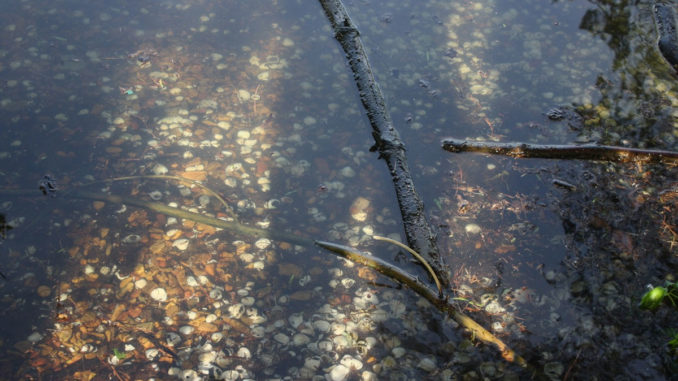
The redear sunfish, known scientifically as Lepomis microlophus and informally as bream, stumpknocker, cherry gill, rouge ear sunfish, Georgia bream and shellcracker, is a slab-sided fish with a red or orange edge along its ear flap, a characteristic that distinguishes it from other sunfish. The redear also lacks blue lines on its cheeks possessed by other sunfish.
The redear grows larger than other sunfish, often reaching two pounds with the state record, a 4-pound, 15-ounce fish taken from a private pond in Edgecombe County in 2008.
While the redear dines upon fish eggs, insect larvae, worms and crayfish, it eagerly consumes aquatic clams, snails, and freshwater mussels by crushing the shells of these mollusks with tooth-like grinders in their throats, hence, the name shellcrackers.
They are nature’s perfect nutcrackers, armed with the capability of not only crunching shelled creatures but also opening small clams. If they could be packaged as Christmas gifts, they’d make the traditional nutcrackers obsolete.
Despite their crunching abilities, shellcrackers are safe to handle and have small mouths.
Redear sunfish thrive in mollusk-filled waters throughout North Carolina and the United States, except for cold, mountain waters. The redear sunfish is at home in many of North Carolina’s coastal rivers and reservoirs along the Yadkin and Catawba river systems, including Lake Tillery, Bdin Lake, Tuckertown Lake, Lake Hickory, Lake Norman and Lookout Shoals Lake. They are also present in Shearon Harris Lake near Raleigh and Lake Holt in Granville County.
Most Piedmont lakes offer poor fishing for shellcrackers. The exceptions are lakes that harbor the Asiatic clam or corbicula and snails.
“Where you have corbicula, you have spectacular shellcrackers,” said Scott Van Horn, a former N.C. Wildlife Resources Commission biologist. ” Those things will draw shellcrackers in a big river system.”
Lawrence Dorsey, a Commission biologist from Albemarle, said that Mystery snails that have found their way into Tuckertown over the past five to 10 years which accounts for the large shellcrackers in that lake.
“I have seen large redear sunfish at Tillery as well,” said Dorsey.
Tillery’s shellcrackers dine upon large numbers of black-and-white mussels.




Be the first to comment